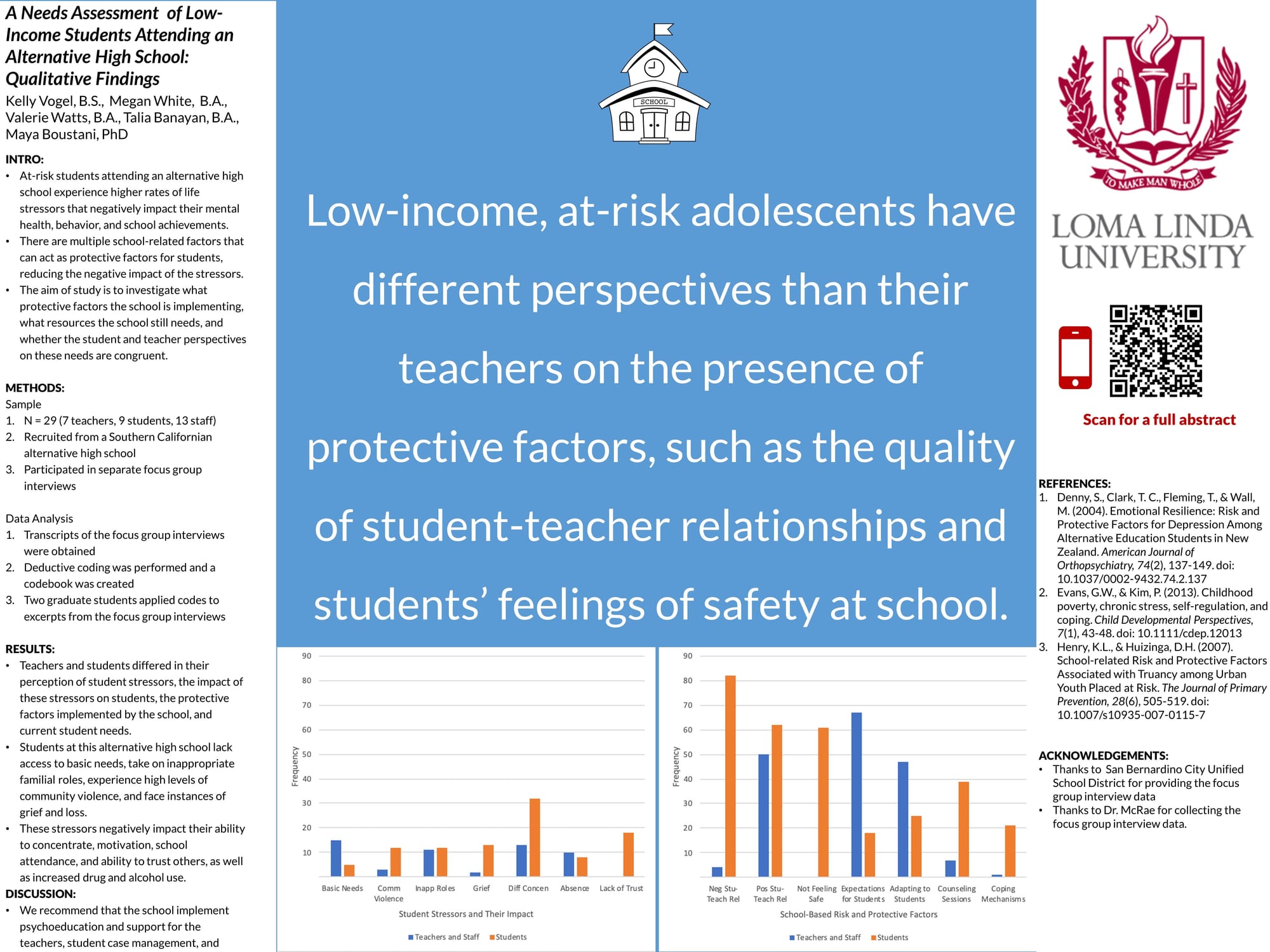A needs assessment of low-income students attending an alternative high school: Qualitative findings

A needs assessment of low-income students attending an alternative high school: Qualitative findings
Kelly Vogel, B.S., Megan White, B.A., Valerie Watts, B.A., Talia Banayan, B.A., Maya Boustani, PhD
Intro: Research suggests that students who attend urban or alternative schools experience higher rates of poverty, family instability, and violence victimization (Denny, Clark, Fleming, & Wall, 2004). These risk factors can result in higher rates of depression, school absences, and lower academic performance (Henry & Huizinga, 2007). This study explores the mental health needs of students at a low-income, urban, alternative high school in order to gain a deeper understanding of the stressors and mental health needs of this vulnerable population.
Methods: Focus groups were conducted with school students, teachers, and staff. Two psychology graduate students reviewed transcripts and engaged in open coding to identify emergent themes. They then engaged in axial coding to organize these themes into logical categories. A codebook was developed based on this axial coding. Next, two separate coders used the codebook to code excerpts from the transcripts. Discrepancies were resolved via consensus coding.
Results: Results indicate that students attending this alternative high school in a severely underserved community lack access to basic needs, take on inappropriate familial roles for their age, experience high levels of community violence, and face many instances of grief and loss. Each of these stressors can negatively impact their ability to concentrate, their motivation, their school attendance, and their ability to trust others. These stressors also lead to increases in their use of alcohol and drugs. Additionally, the results demonstrate that students and teachers vary in their perception of student stressors, the impact of these stressors on students, the protective factors implemented by the school, and current student needs. Most notably, teachers underestimated students’ feelings of safety at the school and overestimated the positive nature of student-teacher relationships as compared to student reports.
Conclusion: The results from this study will inform the development of mental health and counseling services at the school’s wellness center. Recommendations to the school include psychoeducation and support for teachers, student case management, and mental health support in the school setting.



